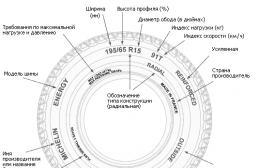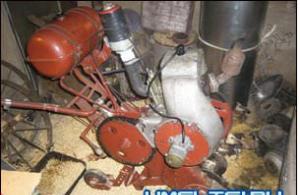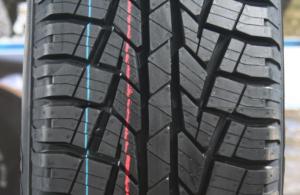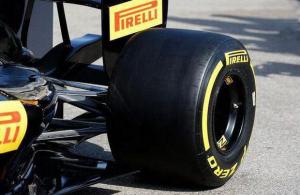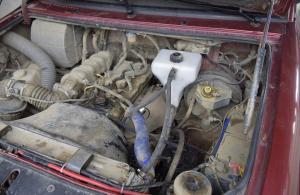The phenomenon of the Italian car industry - a leading position in the world, despite a relatively modest economy - has long been unraveled. Italians approach everything they do with soul and passion. Their temperament and cars did not pass. The list of cars is quite wide, their names are known all over the world and are considered indicators of the elite position of the owners. Luxurious and fast, stylish and expensive Italian cars - we will talk about them.
Famous representatives of the Italian car industry - interesting facts of the history of appearance
Some of the well-known Italian car manufacturers have already sunk into oblivion. However, they have not ceased to be interesting for collectors of rarities. The acting ones continue to amaze their admirers with annual novelties, which are in demand at the most famous venues in the world. The facts of the formation of concerns in the world of the automotive industry are no less interesting:
Ferrari
 The company is not considered the world's oldest car industry, however, the cars certainly enjoy the status as the most famous Italian cars. The official date of the appearance of the Ferrari concern is 1946, but the real time of the appearance of the car, the assembly of the creator of Enzo Ferrari, is 1928, almost 20 years later.
The company is not considered the world's oldest car industry, however, the cars certainly enjoy the status as the most famous Italian cars. The official date of the appearance of the Ferrari concern is 1946, but the real time of the appearance of the car, the assembly of the creator of Enzo Ferrari, is 1928, almost 20 years later.
The young man had a long passion for racing cars, worked in the Alfa Romeo company as an assembler and a tester. The knowledge and experience gained helped him eventually create his first own model - 815. But due to the fact that the work provided for a contract according to which the designer could not produce cars for 4 years, the development remained unknown to most motorists. The Second World War made adjustments to the world auto industry, and the production of Ferrari cars was established a few years after it.
Alfa Romeo
 The formation of the concern began with the release of ... French cars. However, the Italians did not like the light Darracq. The reorganization of the company for Italian preferences was invented by the head of the company, Ugo Stella, a native of the country, well versed in the design of cars. Under his leadership, the A.L.F.A. made cars that went straight to the racetrack - which was the best advertisement for the model.
The formation of the concern began with the release of ... French cars. However, the Italians did not like the light Darracq. The reorganization of the company for Italian preferences was invented by the head of the company, Ugo Stella, a native of the country, well versed in the design of cars. Under his leadership, the A.L.F.A. made cars that went straight to the racetrack - which was the best advertisement for the model.
Romeo is the surname of the new owner of the concern, who bought it out at the beginning of the First World War. Since then, the prefix has remained unchanged for the eminent brand. The company gained international fame already in 1924, having won the race at a top speed of 158 km / h. The success was greatly facilitated by the fact that a year before the event, the brand lured from Fiat the great Vitorio Yano, a genius car designer.
Fiat
 The brand was founded in 1899. Several investors took part in the organization, including the French Renault, on the basis of which cars with De Dion engines began to be produced. Giovani Agnelli - at that time the owner of the future brand - believed that the cooperation of the board of directors and workers was the best tandem for the growth of production and sales. It paid off. In 1903, the reduction in the cost of steel was the impetus for an increase in the production of not only cars, but also agricultural machinery. In 1911, all products are manufactured under the Fiat brand. This was facilitated by the winning of the S61 Grand Prix in French races. The concern became the first among its kind who understood the value of the design vision of a car - from now on, artists and stylists are involved in the development of each car brand.
The brand was founded in 1899. Several investors took part in the organization, including the French Renault, on the basis of which cars with De Dion engines began to be produced. Giovani Agnelli - at that time the owner of the future brand - believed that the cooperation of the board of directors and workers was the best tandem for the growth of production and sales. It paid off. In 1903, the reduction in the cost of steel was the impetus for an increase in the production of not only cars, but also agricultural machinery. In 1911, all products are manufactured under the Fiat brand. This was facilitated by the winning of the S61 Grand Prix in French races. The concern became the first among its kind who understood the value of the design vision of a car - from now on, artists and stylists are involved in the development of each car brand.
The current existence of almost all Italian brands is due to the rebranding (merger) of famous houses with the Fiat concern. That is why prosperity and further successful development in step with world-class progress is ensured.
Italian car brands - history of logos, position at the moment
The number of factories for the production of Italian cars - 10. Each is proud of its own product, defending the prestige of the country.
In detail:
- Alfa Romeo. The logo was created long before the official owner of the concern, Nicola Romeo, appeared on the arena. In a blue circle, a red cross and a snake devouring a person symbolized the victory and power of the dynasty. Italy, where the influence of the surname is strong and is transmitted in every generation, favorably adopted a similar sign. Over time, the car's emblem was modified several times - laurel wreaths and an additional inscription were added. However, the main attributes - the snake and the cross - have been left to this day.

The brand's latest products are a pair of cars - the Mi To hatchback, named after the two cities of Milan and Turin, and the 4C sports coupe. Both cars are painted in the standard color of the concern - wine red. At the Geneva Motor Show, both representatives of the concern earned the approval of those present, as evidenced by sales in different countries of the world.
- De Tomaso. The brand got its start in 1951. At the same time, owners Alejandro de Tomaz presented the first car logo - the Egyptian goddess of fertility Isis. However, its existence was short-lived - laconicism and simplicity outweighed ornate designs. The squat letter T, the recognizable emblem of the car, has undergone minor changes. She became taller, slimmer.

Unfortunately, the founder and mastermind of the production fell seriously ill in 1996. The last car with his development was the Tomaso Guara, after which the creator no longer participated in the design. The brand's decline was officially announced in 2004. To date, the concern, bought by the industrialist Jean Mario Rossignolo, has already presented the De Tomaso Deauville concept car. In the future, the management notes the expectation of sports cars, as well as a limousine.
- DR Motor. The laconicism of the logo speaks of the simplicity and accessibility of the auto - the motto of the concern. The brand's models are progressive technologies coupled with affordable components. So, a compact crossover can have a suspension from a Chinese Cherry and a chassis from a German Bosch.

Today DR Motor is the official assembler of the entire Cherry range. Which, however, does not mean the decline of its own production. Thirteen models were presented to the management. Of these, three variants of supercars received a positive decision on the release. Based on the characteristics of all the presented models, it was decided to make one that would represent the brand in the future.
- Ferrari. A reared horse on a yellow background under the national colors of Italy is the trademark of the famous brand. The creator - Enzo Ferrari - was a big fan of aeronautics. His idol remained Francesco Barak - the hero of the First World War. The ace fighter was adorned with a black horse. It was he who migrated to the emblem of the car. The abbreviation SF is the name of the racing team - literally "Ferrari Stable".

The bison of the Italian car industry does not slow down the pace of development, as if it were after the harsh war years. In recent years, the collection of the Italian brand has been replenished with brands of cars with the epithets "chic", "anniversary", "pride of Italy". New items are equipped with all kinds of technological products. Now it is not only the traditional bloody, but also a different color - turquoise, cobalt and others.
- Lamborghini. The brand of expensive supercars has a corresponding sign - a golden calf and letters on a black background. The owner of the brand, Feruccio Lamborghini, was a big fan of bullfighting and animals in particular. The winners of the battles and the cities in which they took place were immortalized in the names of car models.

Today the concern belongs to Audi, which is part of the huge Volkswagen corporation. Lamborghini models are now produced under the auspices of German manufacturers, however, they have not lost the grace and passion of the Italians. For example, the Gallardo and Gallardo Spyder presented in 2012 are referred to as exclusive cars made to order for the best autobahns in Europe.
- Maserati. The trident on the logo is the city's trademark. Bologna is the hometown of the brand, where the main attraction is the statue of Neptune in the square. The city's colors - blue and red - are also featured on the cars' emblems.

Unfortunately, in the period from 1982 to 1993, the brand was going through hard times - the developments were used in previous models, there were no investors for the new ones. As always, the bison of the Italian automotive industry - Fiat - extended a helping hand. The positive changes continue to this day. The most famous model remains the Quattroporte, which won the grand prix at the Frankfurt show.
- Intermeccanica. This car brand is unknown to most fans of the world car industry, however, in Italy it is an indicator of style and a special position in society. The logo is an indicator of the union of the bison in the automotive industry. Here are the British flag, and the Italian bullfight, whose symbol is the bull, and the rising sun. The brand has been moving towards general appearance all the time of its existence and has a very interesting history.

"Relatives" of IntermeccanicaItalia are Corvette and Ferrari. Unsurprisingly, the models retained the smooth lines of the body, indicating the speed of the car. Now, the car, which has undergone changes since its inception, is a Euro-American mixture, but without pretentiousness. It is undoubtedly an Italian car - sensual and powerful.
- Pagani. of this brand are considered the most expensive and most reliable cars in the world. The logo is distinguished by its simplicity and conciseness - like everything ingenious. The metal perforated oval with the brand name and the contours of the sports car is a kind of car brand.

Until now, motorists are discussing the Zonda supercar, on the basis of which the models that have survived to this day are created. The brand was created in honor of the Formula 1 world champion. The engine of the future "pearl" was borrowed from the Mercedes concern. In 2018, the brand will unveil the chic Wyru Roadster, surpassing previous models in speed, power and lightness. The technical part of the car is completely new and is a surprise.
- Lancia. The oldest brand in the Italian car industry. Since 1911, the logo has changed, however, conceptually remained the same - the flag, shield and spear remained the basis. Actually, the name Lancia literally means - a spear. Until now, the brand remains the best-selling vintage car brand in Italy.

Today Lancia is a museum piece. The brand passed the reins of management to the Fiat concern back in 1969, due to the financial decline of the company - the ambitions of the young owner, who put everything on motorsport, led the brand to a crisis. Until 1994, Fiat regularly launched new models under the Lancia logo. Now information about all brands of cars is of interest to connoisseurs of that era.
- Vignale. The trade name became famous in 1948. Designer Alfredo Vignale, set up the production of cars in his own village and quickly became one of the leaders in the automotive industry in Italy. The logo was not distinguished by ornateness, however, it had taste and laconism. The history of the brand is tragic - it ended with the death of its creator in 1969. Then Ford bought the rights to its products from the Vignale family and to our time production was idle.

Today IVECO is a huge network of factories around the world. The concern sells more than 160 thousand trucks and 430 thousand engines annually. Also, together with other representatives of the global automotive industry, the models of the concern participate in all kinds of shows, where they take premium places.
 And finally, Fiat. This brand, one way or another, is related to all the brands of Italian cars described above. Until now, he remains true to his principle - to produce affordable cars that are not inferior to the premium class of other logos. Competent management of the company for several generations allows us to speak about the perpetuity of the leader of the Italian car industry.
And finally, Fiat. This brand, one way or another, is related to all the brands of Italian cars described above. Until now, he remains true to his principle - to produce affordable cars that are not inferior to the premium class of other logos. Competent management of the company for several generations allows us to speak about the perpetuity of the leader of the Italian car industry.
List of car manufacturers:
Alfa romeoAutobianchi
De tomaso
FIAT
Ferrari
Lamborghini
Pagani
Lancia
Maserati
Automotive industry in Italy
The dominant role in the Italian industry is occupied by the automotive industry, which employs about 2.3 million people, which is the first place in terms of the number of jobs. The industry not only fully covers all the needs of Italy, but also exports large consignments of cars abroad (mainly cars), including to Russia. In terms of the quality of the cars produced, Italy rightfully occupies the leading places in the global automotive industry. In terms of plant capacity, Italy ranks 5th in the world after Japan, Germany, USA, France.
Fiat, the largest concern in the country, occupies a special position in the automotive industry. The factories of the concern are scattered throughout the country. They mainly produce cars, as well as trucks, individual power units, trams, electric locomotives, tractors, locomotives, etc. In addition, the concern has shares in the construction and shipbuilding sectors. The famous hotel in Turin "Stampa" also belongs to the concern.
There are especially many Fiat factories in Turin and its suburbs. Fiat engineers took part in the creation of a plant in Togliatti (Avtovaz) in the former Soviet Union. There are also factories in the country that produce exclusive racing cars "Ferrari" and "Maseratti". There are many scooters in Italy. This is truly their homeland. Italian scooters are in demand in many countries. Recently, the products of the auto giant Fiat have become popular not only within the country itself, but also in Russia. The management of the concern is constantly updating its models, making them in demand on the market.
Based on materials from the site: journey-italy.com
Today, Italian cars are well known all over the world - they conquer the minds of millions with their temperament and passion, and even the mere mention of their names makes the hearts of motorists beat faster ...
Indeed, it is this country that is famous for such high-profile brands as Ferrari, Lamborghini, Maserati, Alfa Romeo, Pagani - even those people who are far from the automotive theme know them.
However, although they are more “mundane”, there are no less well-known and significant manufacturers of “iron horses” in Italy, which are affordable not only for the “elite” - FIAT and Lancia.
In general, the Italian car industry is at a fairly high level of development - this country is one of the most important machine builders not only in Europe, but also in the world. The production capacities of local companies are concentrated on many continents, and their annual output of "iron horses" is about 1.7 million copies (with almost 90% of the production of "FIAT").
The history of the Italian automotive industry dates back to the 1880s, when engineer Enrico Bernardi assembled the first gasoline engine and installed it on a tricycle ...
However, the first cars appeared in this country only in 1898 - when the brothers Matteo and Ernesto Ceirano founded the Ceirano GB & C company and built their first passenger car, the Welleyes.
Already in 1899, it came under the patronage of a newly formed group of investors led by Giovanni Agnelli of the FIAT firm, which in the same year produced the first car, and later became the largest Italian automaker.
In the fall of 1906, the famous racer Vincenzo Lancia jointly with his companion Claudio Foggolin laid the foundation for another legendary company - "Lancia". And her first car was not long in coming - it was "born" on September 23, 1907.
Three more years later, the history of the Italian company Alfa Romeo, no less famous in the world, began - it was then that the company Societa Anonima Italiana Darracq, founded in 1906 by the French engineer Alexander Darracq with the investment of entrepreneurs from Italy, received this name.
In 1914, Alfieri Maserati decided to create his own workshop near Bologna, and after a while his younger brothers Bindo and Ernesto joined him - together they built a sports car with a two-liter engine, and twelve years later, with the help of third-party investors, they formed the Maserati company. ...
One of the most iconic Italian manufacturers - "Ferrari" - appeared in 1929, and its founding father was the talented designer and racer Enzo Ferrari. True, initially the company specialized in the production of racing cars, and entered the "civil sector" only in 1946.
It was thanks to the flaws in the Ferrari models that another Italian automaker, Lamborghini, was “born”. In the 1960s, Ferruccio Lamborghini, then a tractor manufacturer, discovered a clutch malfunction in the 250 GT and, impressed by that moment, decided to create his own supercar company. Moreover, he did not postpone the matter indefinitely, already in 1964 he presented his first serial "iron horse".
During the First and Second World Wars and the economic crisis of the 1970s, many Italian brands left the scene, but the "main players" remained in the ranks, although some of them came under the auspices of FIAT.
Subsequently, the rapid development of the Italian car industry began, thanks to which in the 1990s this country became the third most important player in this industry in Europe and the fifth in the world. In the same years, probably one of the youngest Italian mechanical engineers was born - "Pagani", which was founded by Horatio Pagani.
Currently, Italian cars are known in all corners of the planet, and local manufacturers create not only super-powerful supercars, but also small cars, family cars and even off-road vehicles.
By Creations, the company, founded in 1910, took part in auto racing and won the world's first Grand Prix championship as early as 1925. Advanced production technologies have long turned this brand into an object of preference for wealthy car owners. Alfa Romeo is not just a famous Italian. This is a quality mark.
Ferrari
Each model of the "Prancing Stallion" is rightfully considered a legend, because some of the world's best designers worked on its creation, and racers in the world tested it. The creations of this brand are invariably included in the "Top" of the most expensive vehicles on four wheels. These Italian-made cars are appreciated all over the world.
Maserati
"Jewelers" of the Italian car industry specialize exclusively in the production of exclusives for the sports and class. Most people in the world consider it their duty to have at least one representative of this brand in their fleet.
In dreams of the elite of the auto industry with the “Fatto in Italia / Made in Italy” brand, one should not forget about one of the world's oldest car brands - Fiat, whose products travel across the territories of almost all countries of the world. It was with the construction of the plant by the concern of the same name in the city of Togliatti that the era of domestic "Zhiguli" began. Currently, this industrial giant owns all of the above brands without exception.
Speaking about the brands of Italian cars, it is necessary to mention one more brand. Lamborghini is a car that is associated only with Italy, despite the fact that the parent company is currently the German company Audi.
An article about the most beautiful Italian cars: their main features, important characteristics, photos. At the end of the article - a video about the most popular cars in Italy.

The content of the article:
Italians know how to appreciate a beautiful life and beautiful things - it is understandable why the most magnificent cars are produced in Italy. Designers put power, character and dream into each of them, making the whole world go crazy with them, and competitors - to try to repeat the ideal images.
The most impressive Italian cars - in the next review.
Top 10 most beautiful Italian cars

The model that replaced the Testarossa surpassed its predecessor so much that it became the standard of the entire generation of sports cars of the "zero" period.
A renowned Italian bureau has worked on the design of this car, creating perhaps the most elegant car in the world. The long bonnet with a small cabin, as well as the tail section with spoiler, radiator grille and air compartments for the power unit refer to the Italian classic - the front-engined Berlinetta model.
An innovation was the one-piece headlight units, a first for a Ferrari.
It is surprising that with an enchanting appearance inside, the car is just as phenomenally ascetic. A minimum of details, no expensive materials, only modesty and simplicity. It should be noted except that the interior is made of thin black leather and the metal transmission handle, and the dashboard is neatly inscribed in the laconic interior.
The most stylish element of the interior is the luggage compartment behind the seats, which holds a medium-sized suitcase and even secures it with special straps with eye-catching metal buckles.
Under the hood, the handsome man has a 485-horsepower 5.5-liter V12 engine that reaches speeds of up to 320 km / h. The Maranello was tested on the Formula 1 racetrack, and the powertrain was designed to meet the requirements of the Gran Turismo, including electronic fuel injection, hydraulic valves and a variable return exhaust system.

The road leading along the Côte d'Azur, salty air, southern scents and blue skies - what is drawn only from the mention of this model.
Officially designated Ferrari 365 GTB / 4, this stylish, legendary, and at one time the fastest car in the world has never used this common name. Immediately after winning the 24-hour race of Daytona, journalists awarded the car with the nickname of the same name, with which it went down in history.
The design of the model is fundamentally different from all its predecessors, but with a sharp style it resembles a Lamborghini. Although the 1968 racing fashion involved placing the engine in the rear, Ferrari engineers categorically placed it in the front.
By the way, the performance of this very 4.4-liter 352-horsepower engine for those years was truly phenomenal - start up to hundreds of kilometers in 5.4 seconds at a maximum speed of 280 km / h.
The lightweight, albeit completely steel body did not deprive the car of either dynamism or maneuverability. The chassis received the most comfortable design still used in Ferrari: with the engine and high-alloy block in the front, the 5-speed transmission was placed behind, which ensured the perfect balance of weight.
Someone might call the appearance, the narrow long "muzzle" and the absence of pretentious elements boring, mundane. But even this restraint of the interior and exterior still invariably attracts the attention, justifying the definition of the best car in the world given by the media.

The name "red-headed" evokes an association with the leader of the Redskins, which is quite justified, given the sensation she made.
The model was not intended for races on race tracks, but it still acquired exclusively sporting features: a predatory "muzzle", a lowered suspension, radiators nestled on the sides and modern, lightest, aerodynamic materials.
The Ferrari team worked on the novelty for more than two years, after which it showed the public the fastest car for 1982, incredibly beautiful, unusually daring, but only more attractive.
Aggressive, innovative design coupled with a 390-horsepower V12 engine, reaching hundreds of kilometers in 5 seconds at a speed of 290 km / h, made the model one of the most popular and sold by the manufacturer.
Salon, luxurious but modest, was typical of Ferrari, but surpassed both the predecessor Berlinetta Boxer and the direct competitor to the Lamborghini Countach in terms of comfort and ergonomics.

Almost every car enthusiast had calendars, posters, notebooks and toy models with this car from 1974 to 1990.
The name of the model does not have a literal translation, denoting an enthusiastic exclamation at the sight of something incredibly beautiful. It is this feeling, impression, delight that the young designer Marcello Gandini put into this strange, too angular, too wide, not at all aerodynamic body. As a result, he got a real Darth Vader vehicle, so unlike other, frankly sexy Italian cars.
Thanks to Gandini's quirk, for the first time in the history of the automotive industry, the model had to design unusual guillotine-type doors, since due to the wide body and huge doorways, no other doors would simply not fit.
Paradoxically, such a non-standard image became not only a cult, but also a standard for automotive designers over the next few years.

Someone will be surprised by the presence of this model in the rating - no gloss, chic, elegance. But this is exactly the idea that designer Djergetto Giugiaro tried to convey to drivers - Italian does not always mean bright and daring.
The car manufacturer Lancia has created true race cars for ordinary city roads. That is, any owner, with speed in blood, could simply rid the cabin of excess cargo, reinforce the body with beams, equip it with four-point belts and get an invincible racing car.
Well, let the model outwardly resemble the Soviet "nine", thanks to the inexplicable Italian appeal, it has always been spoiled by the attention of motorists. And if you remember the sporting achievements - only in the world rally championship 6 victories - then the phenomenal popularity of the model is absolutely justified.

The name given to a Spanish bullfighting farm is perfect for this car. Extremely harmonious, thoughtful and calculated to the smallest detail design, in which there is nothing superfluous.
Everything in this model - from the button hidden in the ventilation slots of the lock to the recessed headlights that pop up when the dipped beam is turned on - attracts attention and bewitches.
Squat, literally lying on the belly, the body with a massive front and chopped off rear part does not seem at all awkward. A large air duct framed by cilia, a single glass area that merges into one windshield and side windows, clear but smooth contours demonstrate the swiftness of a 350-horsepower V12 engine.
Until now, connoisseurs of beautiful cars are looking for these models at auctions, purchasing for fabulous money.

After the appearance of this model, the manufacturer was able to confidently compete with the eternal enemies - Ferrari and Lamborghini. The design also belongs to Gergetto Giugiaro, but the difference with Lancia is obvious.
Very low, just over a meter in height, with a pointed nose and a seemingly chopped-off tail, a door deeply sloping forward, repeating the lines of the driver's seat, an elongated triangular glass stretching from the pillar to the very stern - the car frighteningly resembled a sawfish. It is this chopped design that will be called Giugiaro's signature style, which will become a reference for the 70s.

Although countries with the automotive industry have several manufacturers, it can be argued that each of them has its own "favorite", the so-called symbol.
So, despite the popularity of the French "fawn", they can not fight the tender love for Citro? N. Among the Germans, the absolute leader is the "Beetle", and in Italy the good old Fiat 500 is the iconic car.
This model has set an absolute record for the number of travel photos with its participation among travelers from all over the world. The owners explain this phenomenon by the fact that the car is easy to control, dynamic, comfortable and very funny. The last factor is important, first of all, for the Italians themselves, who are so fond of fun and lightness.
Despite its cartoonish appearance, the tiny car is very strong, durable, easy and cheap to maintain, and finally economical, which has earned it worldwide fame.
"Mouse" or "five hundred" was able to carry up to 4 people who could place a minimum of luggage in the net on the roof. The doors opened against the movement of the car, and the rear window could be wiped without even getting out from behind the wheel.
When the model's "resurrection" was announced in 2007, the hype among fans of the mini-car was such that Fiat people compared its popularity to the glory of Apple.

This brand has either fanatical fans or equally fierce opponents. Opinions about the models differ equally dramatically: luxurious and unreasonably expensive, technological and absolutely unreliable. But at the same time, if the opportunity presented itself, hardly any motorist would refuse such a car in his garage.
Many people love the Brera model even with its rather gloomy "muzzle", even with the stern, which is vulgarly raised like that of a frivolous woman, even in the absence of a trunk handle, which has to be opened by pulling the emblem. She is like a bitchy woman who annoys, outrages, but constantly beckons.
And after all, almost all the creations of Gergetto Giugiaro evoke just such feelings, which does not prevent them from winning countless prizes and awards.
Although this 3-door sports car outwardly strikingly resembles a relative - the Model 159 - it was he who gained worldwide fame and veneration. Squinted 6-eyed optics, the manufacturer's characteristic V-shaped radiator grille with horizontal crossbars, smooth lines, a swift silhouette that make you forget about disgusting aerodynamic characteristics.

The legendary super sedan, the car for true connoisseurs, the legend with half a century of history that changed the idea of luxury - it's all Quattroporte.
Born in 1963, it is a new car class - the everyday sports car. Already in his first generation, he showed a strong-willed character under the appearance of a respectable "Italian", which so bribed Anthony Quinn, Marcello Mastroiani, Prince Rainier and other celebrities who became one of the first owners of the model.
Now, in its sixth incarnation, the car has not lost that perfection and elegance laid down by the designer Pietro Frua. She still charms with relief air intakes, a beautiful front spoiler, chrome inserts on the bumper, graceful optics.
This is a car in which you want to rush carelessly along the vineyards with the breeze to your own villa on the coast. It is not for nothing that this particular model is in service with the Italian embassy in Moscow, so as not to deprive a foreign land of luxury, comfort and a sense of unlimited freedom.
Italian designers have long been unconditionally recognized as the best in the world. Their formula for success is attention to detail, not just an overall concept. Each model they assembled is a personality, character, strength, power. This is the beauty that makes car enthusiasts open their hearts and wallets in pursuit of another Italian "beauty".
Video about the most popular cars in Italy:


